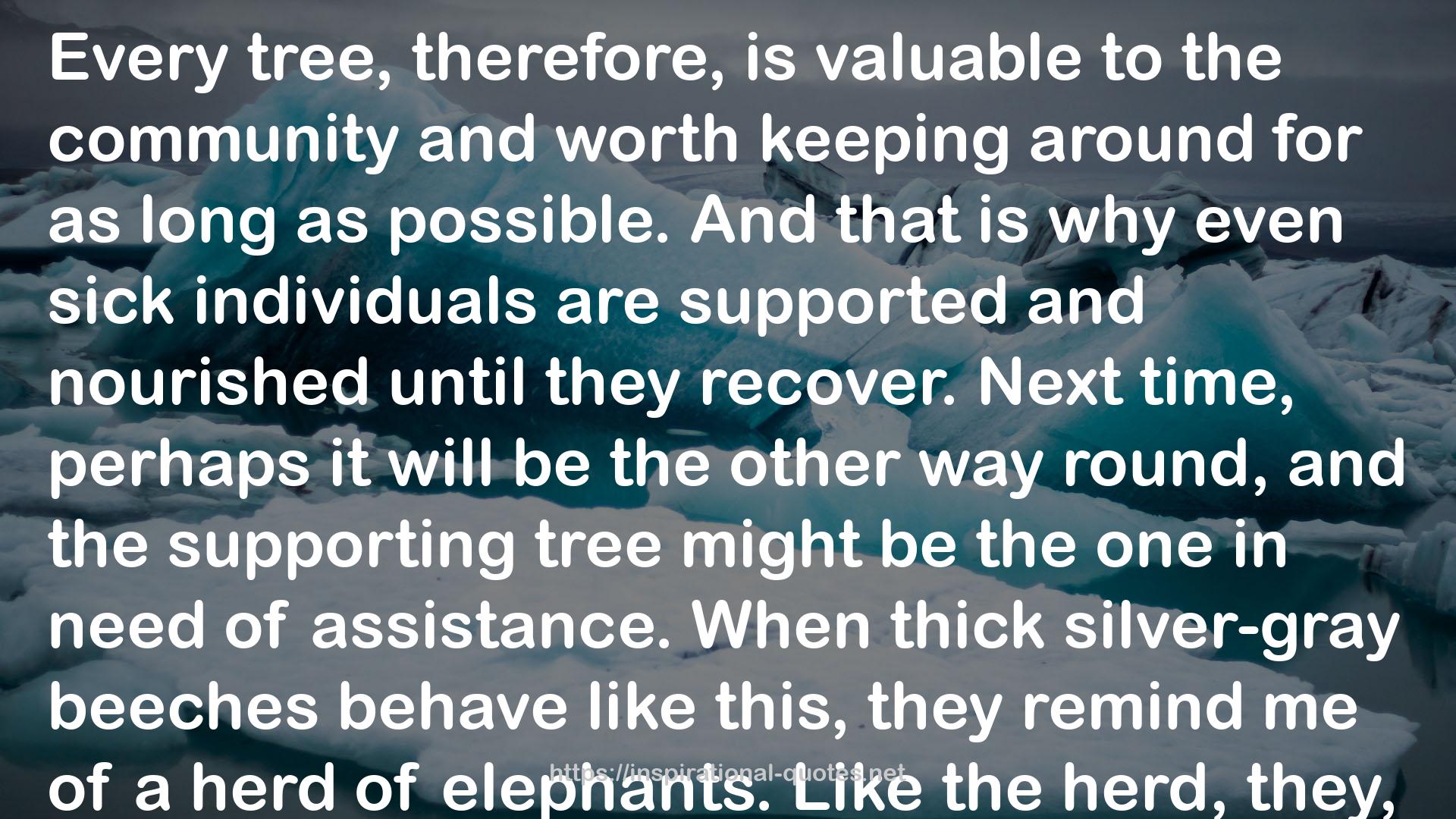" Every tree, therefore, is valuable to the community and worth keeping around for as long as possible. And that is why even sick individuals are supported and nourished until they recover. Next time, perhaps it will be the other way round, and the supporting tree might be the one in need of assistance. When thick silver-gray beeches behave like this, they remind me of a herd of elephants. Like the herd, they, too, look after their own, and they help their sick and weak back up onto their feet. They are even reluctant to abandon their dead.
Every tree is a member of this community, but there are different levels of membership. For example, most stumps rot away into humus and disappear within a couple of hundred years (which is not very long for a tree). Only a few individuals are kept alive over the centuries, like the mossy "stones" I've just described. What's the difference? Do tree societies have second-class citizens just like human societies? It seems they do, though the idea of "class" doesn't quite fit. It is rather the degree of connection-or maybe even affection-that decides how helpful a tree's colleagues will be.
You can check this out for yourself simply by looking up into the forest canopy. The average tree grows its branches out until it encounters the branch tips of a neighboring tree of the same height. It doesn't grow any wider because the air and better light in this space are already taken. However, it heavily reinforces the branches it has extended, so you get the impression that there's quite a shoving match going on up there. But a pair of true friends is careful right from the outset not to grow overly thick branches in each other's direction. The trees don't want to take anything away from each other, and so they develop sturdy branches only at the outer edges of their crowns, that is to say, only in the direction of "non-friends." Such partners are often so tightly connected at the roots that sometimes they even die together. "
Image for Quotes

You can check this out for yourself simply by looking up into the forest canopy. The average tree grows its branches out until it encounters the branch tips of a neighboring tree of the same height. It doesn't grow any wider because the air and better light in this space are already taken. However, it heavily reinforces the branches it has extended, so you get the impression that there's quite a shoving match going on up there. But a pair of true friends is careful right from the outset not to grow overly thick branches in each other's direction. The trees don't want to take anything away from each other, and so they develop sturdy branches only at the outer edges of their crowns, that is to say, only in the direction of "non-friends." Such partners are often so tightly connected at the roots that sometimes they even die together." style="width:100%;margin:20px 0;"/>